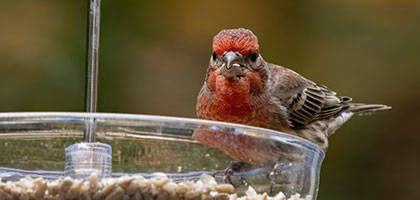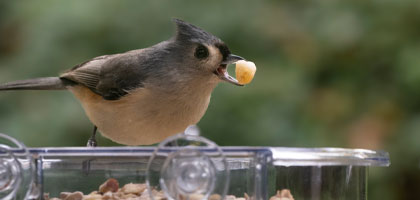Bird feeders can bring a flurry of feathered friends to your yard. They offer a close-up view of birds in their natural behavior. But what if your bird feeder remains untouched? You've set it up with care, filled it with seeds, but the birds are nowhere in sight. It's a common concern among bird enthusiasts and homeowners alike.
This article aims to shed light on this issue. We'll explore the possible reasons why birds might be giving your feeder a miss. From feeder placement to food quality, many factors can influence bird visitation. We'll also provide actionable bird feeder ideas and tips. You'll learn how to choose the best bird feeders and how to maintain them for maximum appeal.
By the end of this guide, you'll be well-equipped to attract a variety of birds to your feeder. So, let's dive in and solve the mystery of the deserted bird feeder.
Understanding Bird Feeder Dynamics
Birds are creatures of habit, often taking time to discover new feeders. This process can sometimes take days or even weeks. During this period, birdwatchers need patience and a little perseverance.
A successful bird feeder setup hinges on various factors. Elements such as feeder placement, food variety, and habitat surroundings play significant roles. Recognizing these dynamics will enhance your bird-watching experience and attract more birds to your feeder.
Common Reasons Birds May Shun Your Feeder
Birds may avoid your feeder for various reasons. Understanding these can help improve your feeder's appeal. Factors such as location and safety of the feeder play significant roles.
Here are some common reasons your bird feeder might not be attracting birds:
- New feeder adjustment period
- Improper feeder placement
- Seasonal and migration influences
- Competition with natural food sources
- Unclean feeders leading to disease
- Limited food variety and quality
- Nearby predators or pets
- Human disturbance or noise
Exploring and addressing these factors can transform your feeder into a bird hub. Keep these aspects in mind to encourage bird activity. Implementing changes might just entice birds back to your feeder.
1. New Feeder Adjustment Period
Birds often require time to discover and feel comfortable with new feeders. The initial adjustment period can be long.
Patience is key here. During this period, leave the feeder untouched and wait. Birds may gradually notice the new food source and start visiting.
2. Feeder Placement and Safety
The location of your bird feeder can significantly influence bird visits. Feeder placement affects both safety and accessibility.
Position feeders in quiet areas away from disturbances. Ensure they are visible yet safe from predators, contributing to an inviting atmosphere for birds.
3. Seasonal and Migration Patterns
Bird presence at feeders varies with seasons and migration. During certain times, birds may prioritize migration over feeding.
Understanding seasonal changes help in anticipating fluctuations in bird visits. Try to cater to the specific needs of birds during these times.
4. Competition and Natural Food Sources
Natural food sources can divert bird attention away from feeders. In seasons of abundant natural food, feeders might seem less appealing.
Observe local plant life and determine when competition is strongest. Adjust feeder offerings accordingly to maintain bird interest.
5. Feeder Cleanliness and Disease Prevention
Cleanliness is crucial for a thriving bird feeder setup. Dirty feeders can harbor diseases and deter birds.
Regular cleaning prevents disease spread. Keep feeders hygienic and replenish them with fresh food to maintain bird health and interest.
6. Food Variety and Quality
Birds have diverse food preferences, affecting their feeder visits. Offering varied and quality food will attract more species.
Experiment with different seeds, suet, or nectar. Ensuring fresh and high-quality offerings can enhance feeder activity.
7. Predators and Pets
Predators or pets near feeders can scare birds away. Safety concerns are a top priority for birds seeking food.
Create a safe feeding environment by minimizing pet and predator access. This reassures birds, making feeders more attractive.
8. Human Activity and Noise
Excessive human activity or noise near feeders can dissuade bird visits. Birds prefer tranquil settings for feeding.
Limit disturbances near feeders and create a peaceful surrounding. Encouraging a serene environment will make birds more inclined to visit.
Enhancing Your Bird Feeder's Appeal
To make your bird feeder irresistible, consider a few adjustments. Simple changes can greatly increase bird traffic to your yard.
Start with variety. Offer different types of food to cater to a wide range of bird species. Additionally, adjusting your landscape with bird-friendly plants can complement your feeder.
Bird Feeder Ideas and Tips
Attracting birds can involve creative feeder ideas. Try using accessories like trays or perches to enhance the feeding experience.
Also, a consistent feeding schedule establishes routine and trust among birds. Regular refilling and seasonal food adjustments are valuable tips to consider.
Choosing the Best Bird Feeders
Selecting the best bird feeders depends on your target species. Tube feeders suit small songbirds, while platform feeders are versatile.
Assess the design and materials; easy-to-clean options ensure long-term hygiene. Baffle-equipped feeders help keep pests away, maintaining a welcoming environment for birds.
Creating a Bird-Friendly Habitat
A thriving bird habitat requires more than feeders. Incorporate native plants to provide natural food and shelter. Bird baths add value by offering water sources.
Minimize pesticide use to protect local bird populations. By creating a holistic habitat, feeders become part of a larger, sustainable ecosystem.
Troubleshooting and Maintenance
Maintaining your bird feeder's appeal requires regular troubleshooting. Issues like pests or reduced bird visits are common but addressable.
To help, here's a quick checklist of steps:
- Ensure fresh, high-quality birdseed is always available.
- Regularly clean feeders to prevent disease spread.
- Adjust feeder placement if visits dwindle.
- Rotate food types seasonally to match bird preferences.
Regular Cleaning and Refilling
Routine maintenance is vital for a thriving bird feeder. Clean feeders with a mixture of water and vinegar to prevent mold.
Also, refilling timely ensures a steady food supply, encouraging regular bird visits. This practice maintains interest among diverse bird species.
Dealing with Squirrels and Other Pests
Squirrels and pests can deter birds. Utilize feeders with built-in baffles to restrict pest access effectively.
Alternatively, place feeders strategically away from trees or structures pests might use to reach them. This makes the environment challenging for pests yet accessible to birds.
Monitoring and Making Adjustments
Observing bird activity can offer insights for effective adjustments. Note which foods attract different species and adjust accordingly.
Weather changes can affect visits, so adapt feeder placement as needed. Seasonal evaluation keeps your bird feeder attractive all year round.
Conclusion: Patience and Persistence
Creating an inviting bird feeder environment may take time and patience. Birds might not appear right away, but persistence is key. By regularly maintaining feeders and adjusting strategies, you increase the chances of attracting a variety of feathered friends to your yard. Stay patient and enjoy the process.
Additional Resources
For more bird feeding guidance and community support, explore online birding communities and websites of local bird conservation organizations. These resources offer valuable tips and insights.






